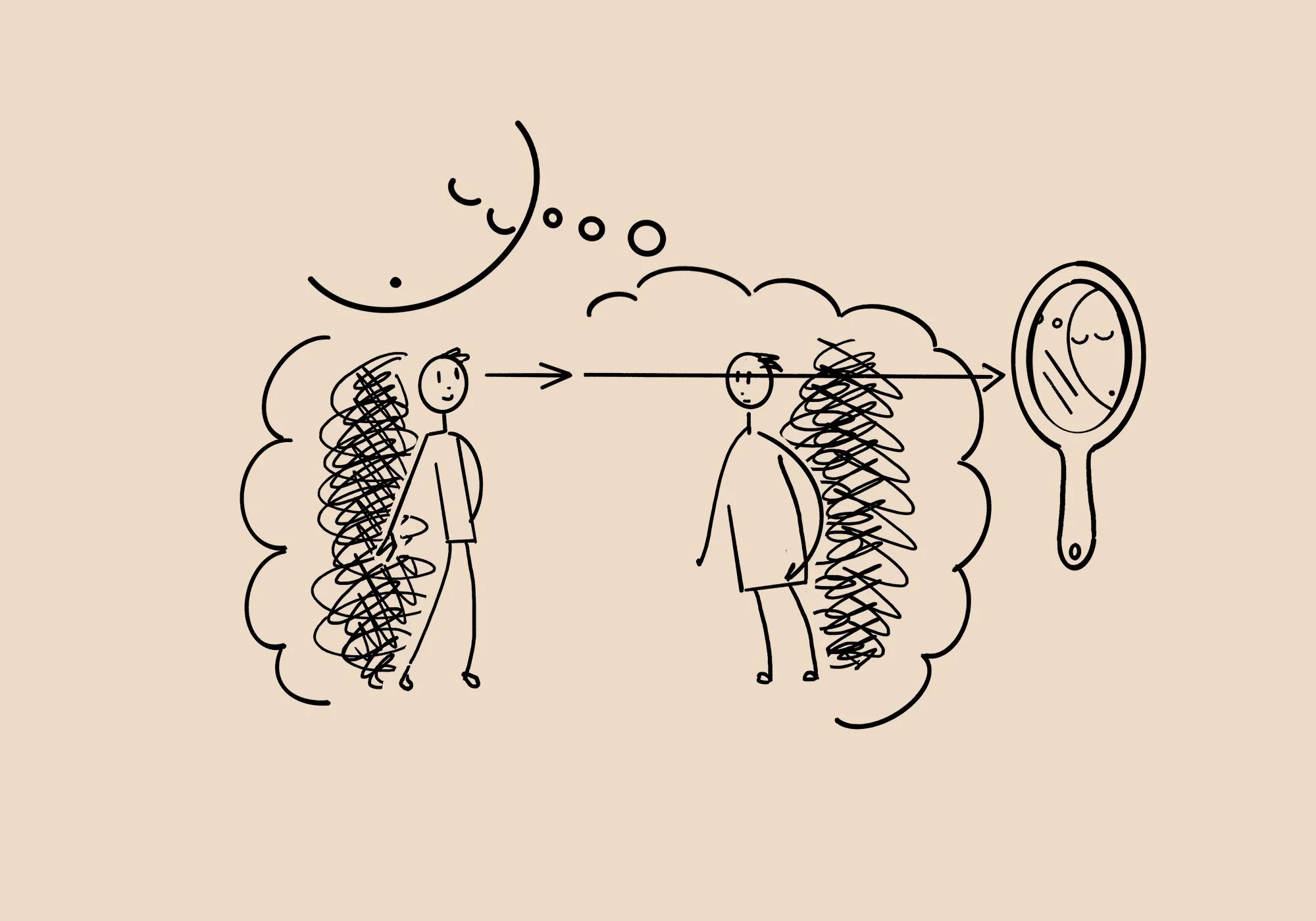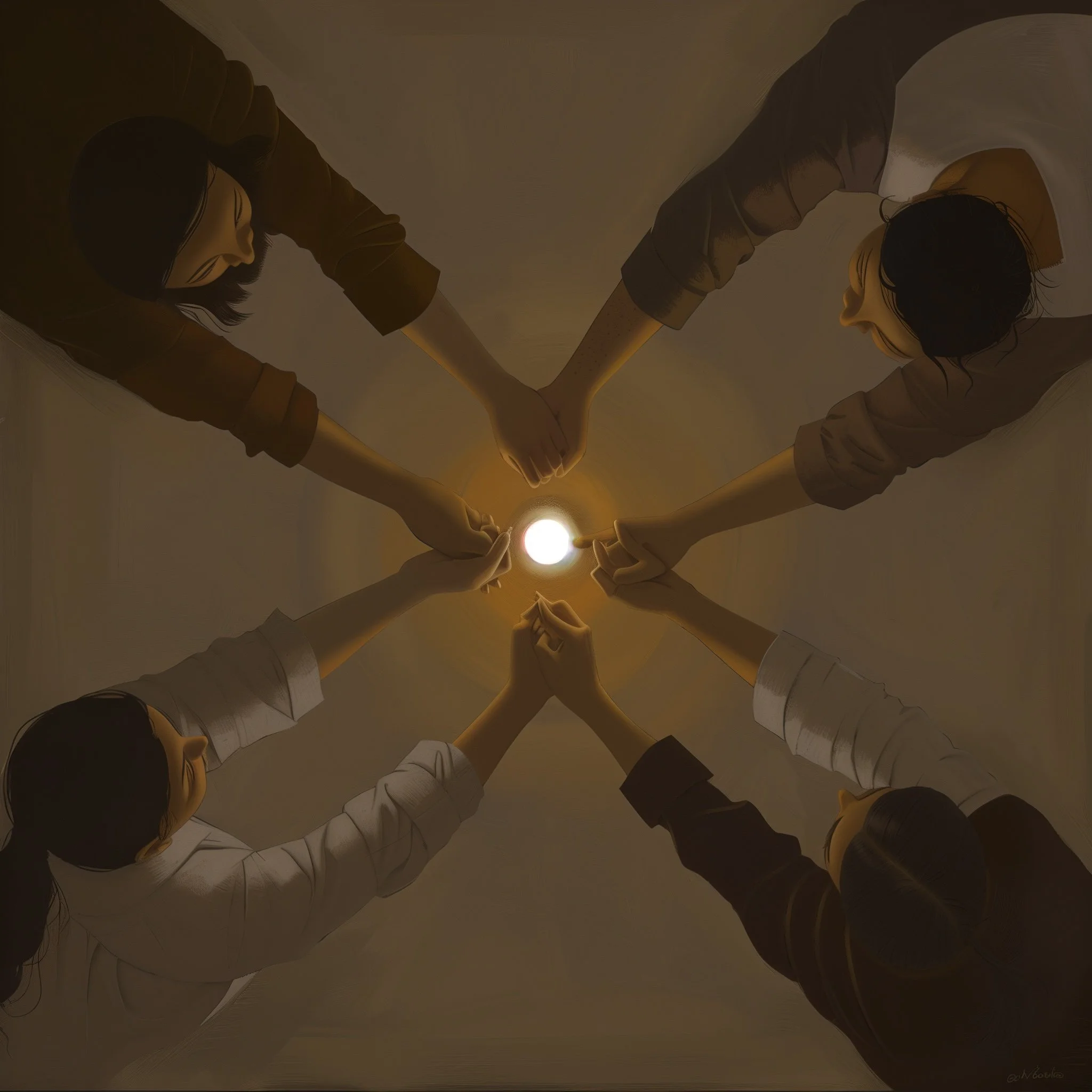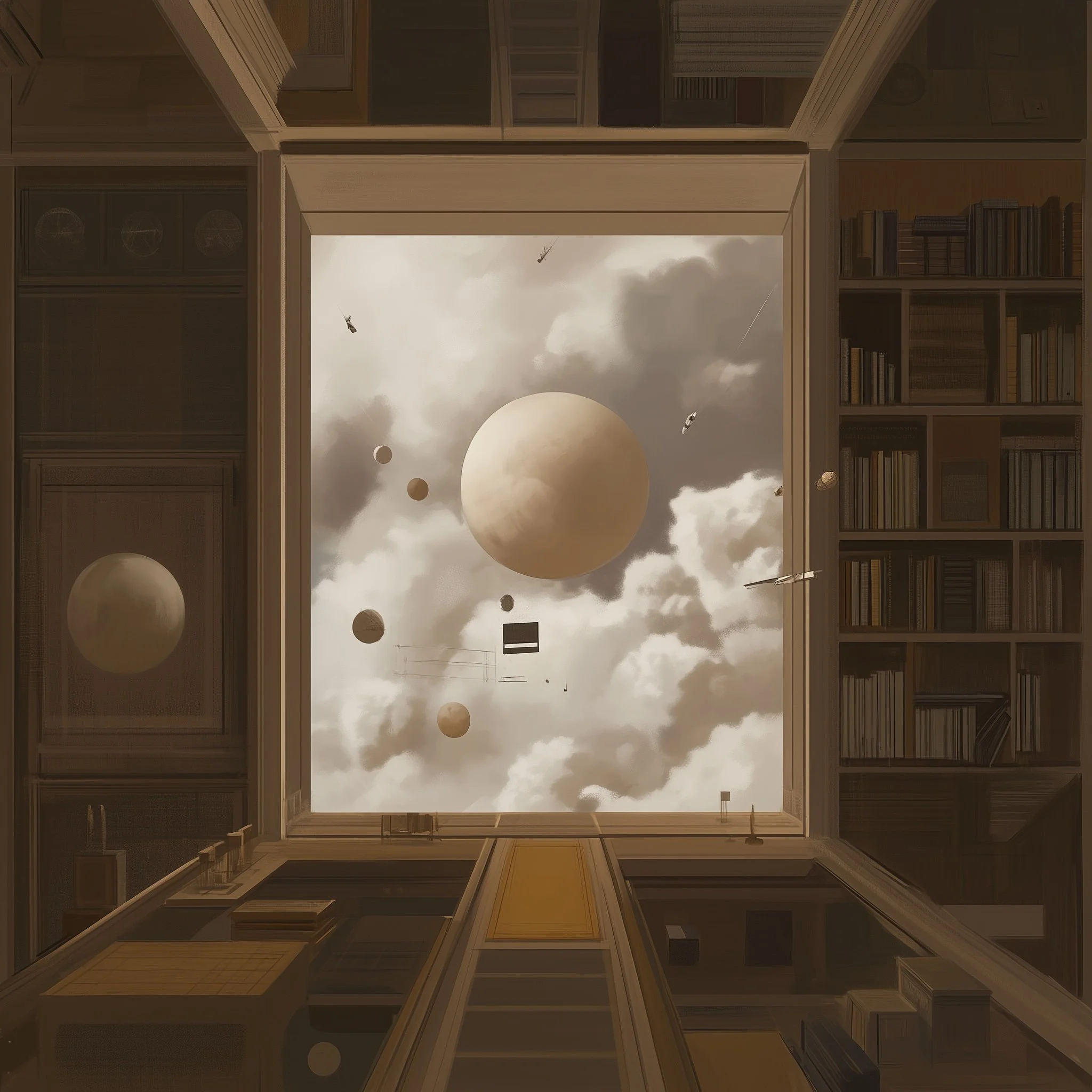MIND-FIRST PRACTICES
We The Dreamer — Core Practices.
Six field tests that turn the consciousness-first hypothesis into daily practice.
Last updated: October 9, 2025Jump to:
We The Dreamer · As The Dreamer · See The Dreamer · Choose Again
Practice Finder
Find the field test that fits your moment.
stressful moment · tension after talk · traffic crowd · fear surge · waking fog · under pressure · before reaction · authority trigger · self-critique · conflict · shared silence · debate heat · team strain · family tension · deep connection · group focus · social divide · news polarity · morning calm · centering pause · emotional fatigue · post-interaction · social prep · before rest · between tasks · walking flow · open heart · after clash · reactive mood · heavy world · confusion · loss replay · self-blame · harsh news · tense reply · dense reality
When conflict divides, We The Dreamer chooses again.
When the world feels against you, We The Dreamer remembers.
When a friend suffers, We The Dreamer recognizes.
When the news screams of wrongs, We The Dreamer releases.
A LIVING THEORY OF IDENTITY
We The Dreamer is a living theory of identity — a field test of perception. Suppose consciousness comes first, one mind dreaming this world. We may never know for sure, but trying opens a kinder, more lucid reality.
This page gathers the core practices of that experiment — doorways for testing the stance in daily life.
[TUNING:]
1. As The Dreamer — Opening Up to the Dream Theory
A repeatable field test for trying on the Dreamer stance in real time.
Field sketch — visual cue, not final symbol — awareness unknots from confusion into the open field of calm clarity.
If We The Dreamer proposes that one mind dreams the world, then As the Dreamer tests that premise at the level of identity.
In the consciousness-first experiment, perception is not something happening to you — it’s something happening as you. This practice asks: what shifts when you stop being the dream-character and open to being the field that dreams?
Where Dream This relates to the scene (“this is part of the dream”), As the Dreamer shifts who you take yourself to be in that scene.
The Practice:
Notice: any moment of mental tension (like in the sketch).
Test: silently, “As the Dreamer…” and feel as if you are not inside the storm, but the field that’s dreaming it.
Hold: for ~3 seconds; let attention rest as that wider field and feel the knot loosen a little.
Observe: from that expanded stance — not to fix the scene, but to respond as the calm field behind it.
Cue Map (Apply the Tuning):
When fear rises — As The Dreamer, I’m Safe.
When authority demands obedience — As The Dreamer, I’m Freedom.
When regret lingers — As The Dreamer, I’m Innocence.
When someone is against me — As The Dreamer, I’m Oneness.
When confusion clouds the mind — As The Dreamer, I’m Clarity.
When pressure builds — As The Dreamer, I’m Ease.
(Use any as micro-reminders to test the same shift across different life scenes.)
The Qualities Behind the Practice
Each cue echoes one of the Dreamer’s Qualities — the frequencies of presence, peace, clarity, generosity, and oneness that counter the reflexes of separation.
Meet the Dreamer’s Qualities →Where to test it:
During a stressful workday moment.
In traffic or a noisy public space.
While ruminating after a conflict.
When waking up from a bad dream.
Micro-cue: “As The Dreamer, I’m Safe.”
Connected Mind-First Principles:
Principle 1 — Consciousness as Primary: all appearances arise in awareness, not outside it.
Principle 2 — Perception is Creative: the world reflects the stance of mind you occupy.
Principle 4 — Identity is Mutable: what you identify as changes what you perceive.
[TUNING:]
2. We The Dreamer — Remembering as the Dreamer
Living the premise, one mind behind the world.
Field sketch 1. — visual cue, not final symbol — awareness seeing awareness through form.
Every practice in this library begins here. We The Dreamer is the creative experiment’s central inquiry: Suppose consciousness comes first — that we share one mind dreaming this world. This isn’t doctrine; it’s a design hypothesis, reverse-engineered from the Consciousness-First Principles, a set of testable shifts distilled from science, philosophy, and contemplative practice.
If this premise holds even partially true, then perception itself is participatory. Identity, conflict, and creativity are not separate events in matter but movements in mind. The inquiry is simple: What changes when we remember that?
The Practice: Use We The Dreamer as both mantra and stance. When looking at another, gently set aside body, role, or history and ask: “Can I see the one mind that looks through both of us?” Let awareness look back at awareness — through eyes, voice, or silence. [See field sketch 1.] Notice how judgment softens, how the boundary between observer and observed thins. Is this imagination or perception reclaiming its source?
In conflict → see the same mind arguing with itself.
In love → see the same mind recognizing itself.
In a moment of silence → see the same mind resting as stillness.
Each moment becomes a small field test: does separation feel more or less real when you choose to see this way?
Micro-cue: When the scene tightens, choose again and silently say: “We The Dreamer.” For three seconds, let this be a stance reset. Roles, stories, and reactions drop one notch; awareness steadies. Look for the same mind behind every face — then act from the quieter field. Each time you choose again, you reopen the shared field — the quiet experiment of collective awakening.
Collective note: From I to We. The stance scales: We’ll have to try it in pairs or groups—hold eye contact and agree to meet as one awareness, using the memory of light as each envisions the Dreamer shining through the body’s appearance, letting roles and differences fade for sixty seconds. Name the shared field, not the distinctions. This is how the practice becomes collective awakening in miniature: one room, one mind, many forms. [See field sketch 2.]
Field sketch 2. — visual cue, not final symbol — many forms, one mind.
This practice puts the Consciousness-First Principles into motion:
Principle 1 — World as Cause → Mind as Cause
Testing the premise that experience arises in consciousness, not from matter.
Principle 2 — Separation Exists → Only Appearances of Separation
Observing how difference softens when awareness recognizes itself in another.
Principle 3 — The Many Are Real → Multiplicity Is Dreamt
Re-seeing diversity of form as variations within one field of mind.
Principle 4 — Identity Is Personal → Identity Is Universal
Shifting identification from individual character to shared awareness.
Principle 6 — Love Is Between → Love Is Recognition
Discovering love not as exchange but as recognition of sameness in being.
Principle 7 — Conflict Is Real → Peace Is What Is
Testing whether conflict dissolves when both sides are seen as the same mind.
Principle 9 — Awakening Is an Attainment → Awakening Is a Return
Treating remembrance of oneness as a restoration, not a personal achievement.
Principle 10 — We Are Lost → We Are Dreaming
Re-framing confusion and division as the dream’s own forgetting — and its path back to lucidity.
[VISUALIZATION:]
3. See The Dreamer — Visualizing with Qualities
A short 2-minute practice to feel the Dreamer’s Qualities directly.
Invitation: Close your eyes. Breathe gently. Invite the awareness beyond roles and stories to come to the foreground.
Set the Premise.
Think: “I am the Dreamer, not the dream.”
“I am the cause of the world, not the effect of the world.”
Let this shift take root. The world is happening in you, not to you.
Affirming the Qualities.
Now let The Dreamer’s traits rise in you, one by one.
I am peace — nothing in me needs to fight.
I am love — not in transaction, but in recognition.
I am innocence — untouched by the shadows of the dream we call the world.
I am joy — whole already, lacking nothing.
Feel them, not as ideals, but as truths waiting beneath the noise.
Association of Light.
Picture each quality as light — peace like a calm horizon, love like warmth in the chest, innocence like clear sky after a storm, joy like morning sun breaking through.
Let these lights overlap until they become one radiance — the field of awareness itself.
Joining.
Extend this recognition outward. Imagine that everyone you see today — friend, stranger, even those who challenge you — is held in this same light. Picture their dream-characters fading, one by one, until what remains is this unique radiance shining through each of them. One awareness, one Dreamer, appearing in many forms.
Return with Gratitude.
Rest in the feeling for a moment. Then open your eyes softly, carrying the quiet certainty: We The Dreamer is already here. I can choose it again at any moment.
Now practice it with eyes open. In work conversations, at family dinners, in passing encounters with strangers — let the vision return. Notice the light behind each face. Notice how awareness remains, steady and whole, beneath every role and scene.
[REMINDER:]
4. Choose Again — Returning to the Dreamer’s Stance
A perception experiment for continuing the test when the world feels most real.
Field sketch — visual cue, not final symbol — awareness contracts into reaction, reopen it to the field of shared mind.
If We The Dreamer proposes that one mind dreams the world, this practice tests that premise in the moment of densest illusion — when form feels fixed and the story demands belief.
“Choose Again” turns perception into an act of creative calibration: to pause, reset, and remember the Dreamer before reacting.
Every return to awareness is a choice — quiet, simple, available now.
To choose again is the practitioner’s gesture of staying in the experiment: not escaping the scene, but re-entering it as the Dreamer. It means loosening the world as fixed fact, releasing roles, traits, and stories, and remembering the field of mind that holds them. What remains is not withdrawal but vision — the conscious essence of oneness, still present beneath appearance.
The “I’m The Dreamer” practice opens the first doorway, but daily life is the laboratory. Each role you play, each success or failure, each mask of body or history, is another hypothesis to test. What remains when everything provisional — role, memory, even identity — is set down, and awareness alone is observed?
Not certainty, but curiosity. Not correction, but experiment. Each choice becomes a data point in the inquiry: what changes in perception when awareness precedes interpretation?
Choosing again is the Dreamer’s gesture of re-vision — placing light before form, essence before story, consciousness before condition. Each repetition strengthens the ability to perceive as the shared field rather than as the fragment within it.
This is not retreat but participation — a creative recalibration within a consciousness-first world.
When you train your mind in the consciousness-first experiment,
the world can still feel heavy,
identity can still tighten,
separation can still seem real.
To choose again is to
continue to prioritize the qualities of the Dreamer —
and to stay within the experimental field,
even now.
*ABOUT THIS EXPERIMENT
The Dreamer Project and its affiliated materials (including “We The Dreamer” and the Practice Library) explore a consciousness-first worldview through creative and phenomenological means. These materials are experimental in nature. They make no claims of scientific proof or therapeutic efficacy. No empirical evidence currently confirms or denies the hypothesis that consciousness is fundamental to reality, nor that these practices produce measurable benefits. Participation in this project is voluntary and self-directed. It may surface challenging reflections or unsatisfying results; that possibility is part of the inquiry. If you are navigating mental-health concerns or emotional distress, please seek guidance from a qualified professional. This work is offered freely for educational and philosophical exploration only — a field test in perception, not a path of belief.
PROJECT PHILOSOPHY
Living the Inquiry.
Each practice is a micro-test in the same consciousness-first experiment outlined in The Dreamer Project philosophy. Every moment you “choose again” contributes to the collective hypothesis: what if perception itself is the world’s next frontier?
Read the full hypothesis →META NOTES
This page is a living document. Last updated: October 9, 2025
Updates in this version:
Added We The Dreamer — A Living Theory of Identity introduction to align this page with the homepage philosophy and frame the practices as a living theory in motion.
Integrated the Choose Again — We The Dreamer continuity cue as an experimental reminder for maintaining practice under real-world tension.
Added two cross-link blocks — The Qualities Behind the Practice and Living the Inquiry — to connect this page with the philosophical framework.









